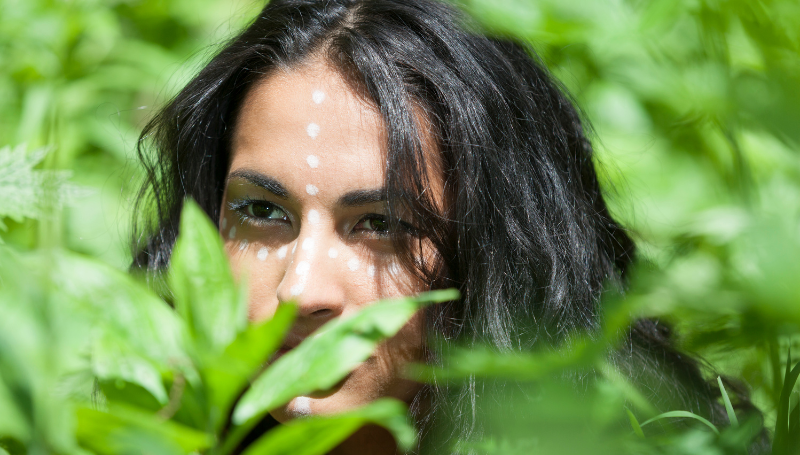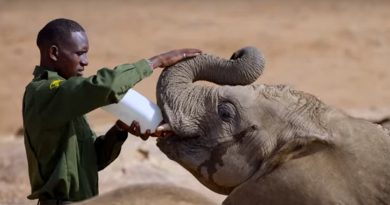Meet 3 Indigenous women fighting for the future of the Amazon
(Conservation International | Kiley Price) Indigenous groups live in and manage more than a quarter of the Amazon basin. Within these communities, women take on many roles — from caretakers and mothers to teachers and healers.
Indigenous women fighting for the future of the Amazon
They are often also on the front lines of protecting the nature their communities rely on. Last year, 24 Indigenous women from communities across the Amazon participated in the first cohort of Conservation International’s Amazonia Indigenous Women’s Fellowship Program.
The region-wide program connects women with funding, training, mentorships and networking opportunities to create or expand conservation initiatives in their countries.
With support from the French government and COICA, a collective of Indigenous organizations in the Amazon basin, the fellows led projects rooted in traditional knowledge that conserve nature and preserve their cultures — from harvesting healing plants in Colombia to transforming trash into treasure in Ecuador. Meet three of these Indigenous conservation leaders below.

Women take on many roles
1. Recovering ancestral practices to heal a community
Growing up in the Chiquitania region of eastern Bolivia, Evelin Garcia has spent her life surrounded by lush forests brimming with endemic trees, vegetables and berries.
When the pandemic hit, Garcia realized that she could use these plants to help treat illnesses and feed her community — if she drew on her own roots and tapped into the traditional knowledge of her ancestors.
“My project is about the revaluation of a medicinal plant called kutuki, with women and girls of my community,” said Garcia, who is a member of Monkox Indigenous group. “During the pandemic, we had a need to rescue this empirical knowledge of our grandparents and our parents.”
Kutuki is a small herb used to treat a variety of illnesses — from colds and fevers to respiratory issues, making it a critical resource to alleviate COVID-19 symptoms. Through the Amazonia Indigenous Women’s Fellowship Program, Garcia and other women in her community created a curriculum for local schools and community centers to teach students ancestral knowledge of the medicinal plants native to their region.
“I would say to women who feel ‘incapable,’ discriminated against … now is the time to stand up and make real all the dreams that we have,” she said. “We are no longer in those times where we had no rights to express our opinions.”
Garcia’s advice for future female conservationists? “Put all your dreams into practice, stand up from where you are and demonstrate your leadership — either in your community or your family.”
2. Fighting pollution with fashion
Deep in the Amazon forest of central Ecuador, Indigenous Kichwa women are turning trash into treasure.
With support from the Amazonia Indigenous Women’s Fellowship Program, Katty Guatatoca created the Awana Collective, a group of Indigenous women working to transform organic materials, such as seeds and wood, and inorganic waste, such as plastics, into handmade goods — including jewelry, fabrics and kitchen products. According to Guatatoca, this group is helping Kichwa women gain financial independence, while protecting the nature they depend on.
“The project itself consists of strengthening the knowledge and skills of the women of the Awana collective, to which I belong, and also the women of the community,” Guatatoca said.
Women in the collective create their designs using techniques and materials that are traditionally part of Kichwa heritage. For example, one of the products offered is called a shigra — a Kichwa term used to describe bags made out of cabuya cactuses.
Through the collective, Guatatoca also works with Kichwa women to promote sustainable environmental management and restore degraded forests in their region so future generations can keep living off the land.
“This is my house, this is my jungle, this is my place, this is my mother Earth,” she said. “Let’s take care of it, let’s preserve it for our generations.”
3. Protecting stingless bees in Colombia
Bees have never scared Carmenza Yucuna — a Yucuna Indigenous woman from Mirití-Paraná in southern Colombia.
In her region of the Amazon, they are stingless — and they have a secret superpower: their honey has a variety of medicinal properties. It can ward off microbial and fungal growth and has been used for centuries by the Yucuna Indigenous peoples to treat wounds and infections. Additionally, the bees are critical for plant pollination and regrowing forests in the region.
Now, Yucuna is working to ensure that ancestral knowledge of stingless Melipona bees — and the bees themselves — survive. Through the Amazonia Indigenous Women’s Fellowship Program, Yucuna completed research on Melipona bees that is now contributing to the care and management of this species in her region. To fund the conservation of these bees, she is also working with older women in her community to help sell the excess honey from their harvests.
“Human beings have not yet been able to plant the number of trees that bees plant,” Yucuna said. “Let us take care of our territory, and take care of the planet.”
The Amazonia Indigenous Women’s Fellowship Program, an initiative of Our Future Forests–Amazonia Verde project, supports Indigenous women leaders and the key roles they play in social environmental conservation. The selected fellows from the second cohort officially began their projects in June 2022.
Kiley Price is the managing editor at Conservation International.
Source: Conservation International
You may also like:




